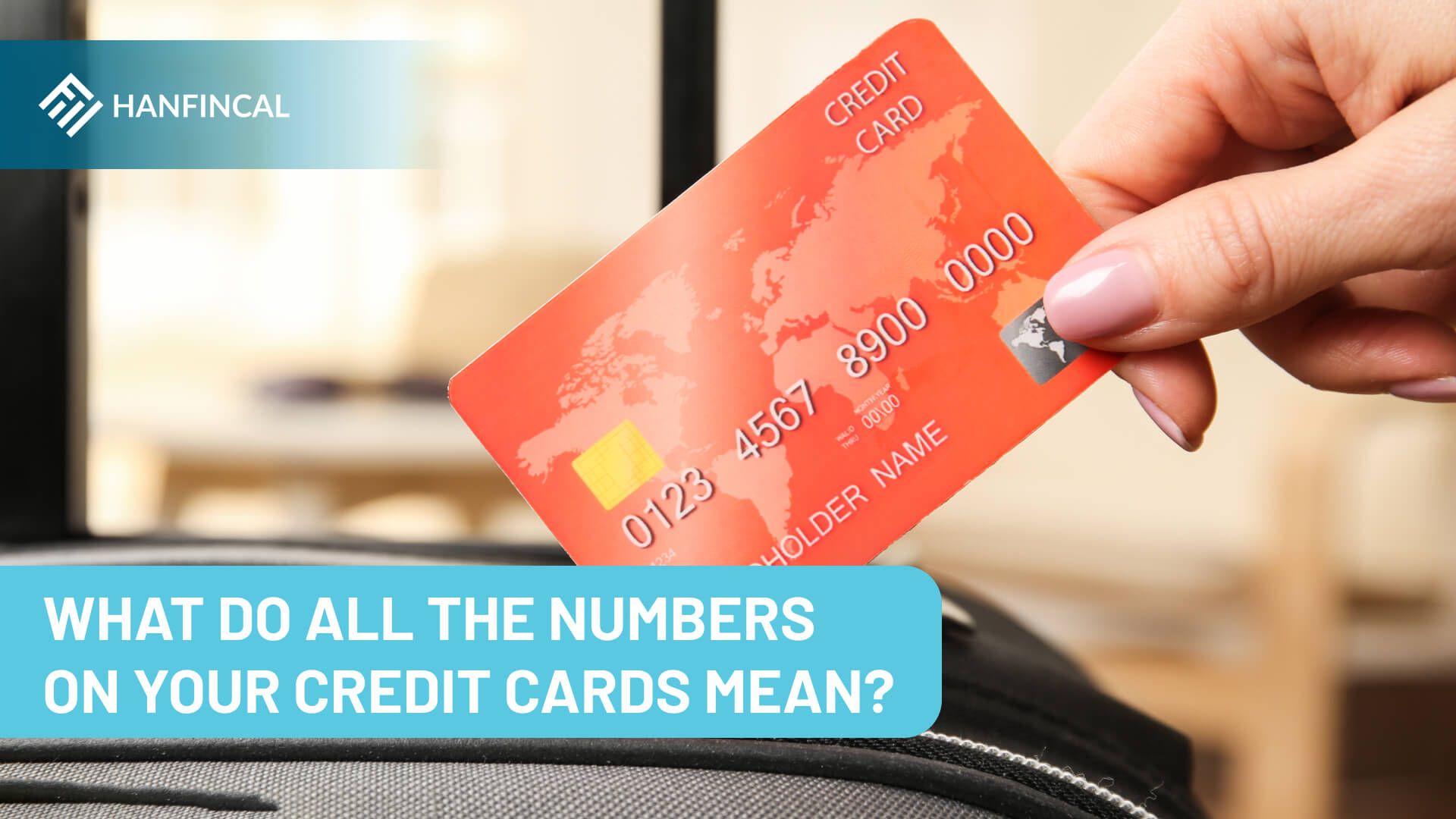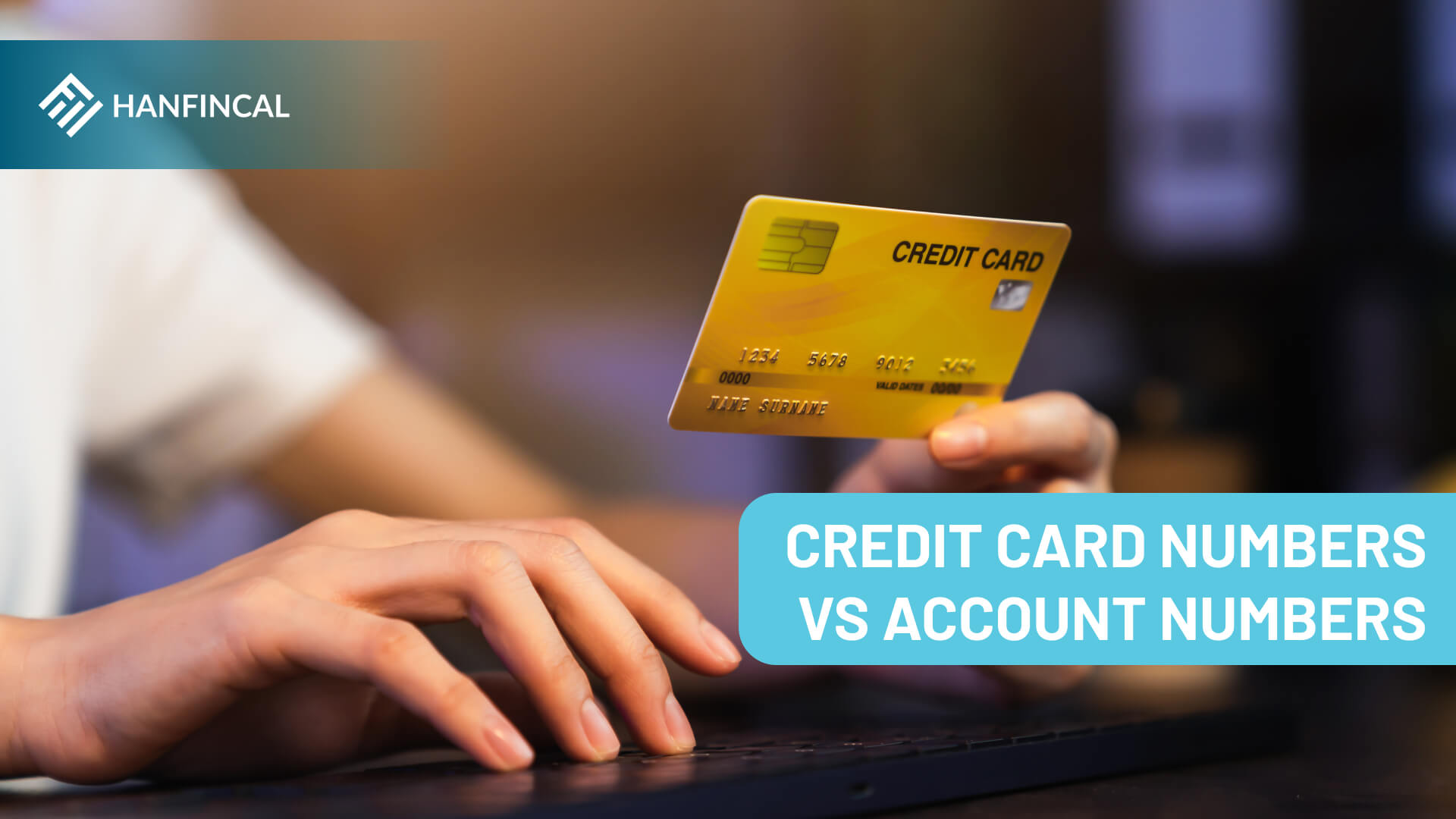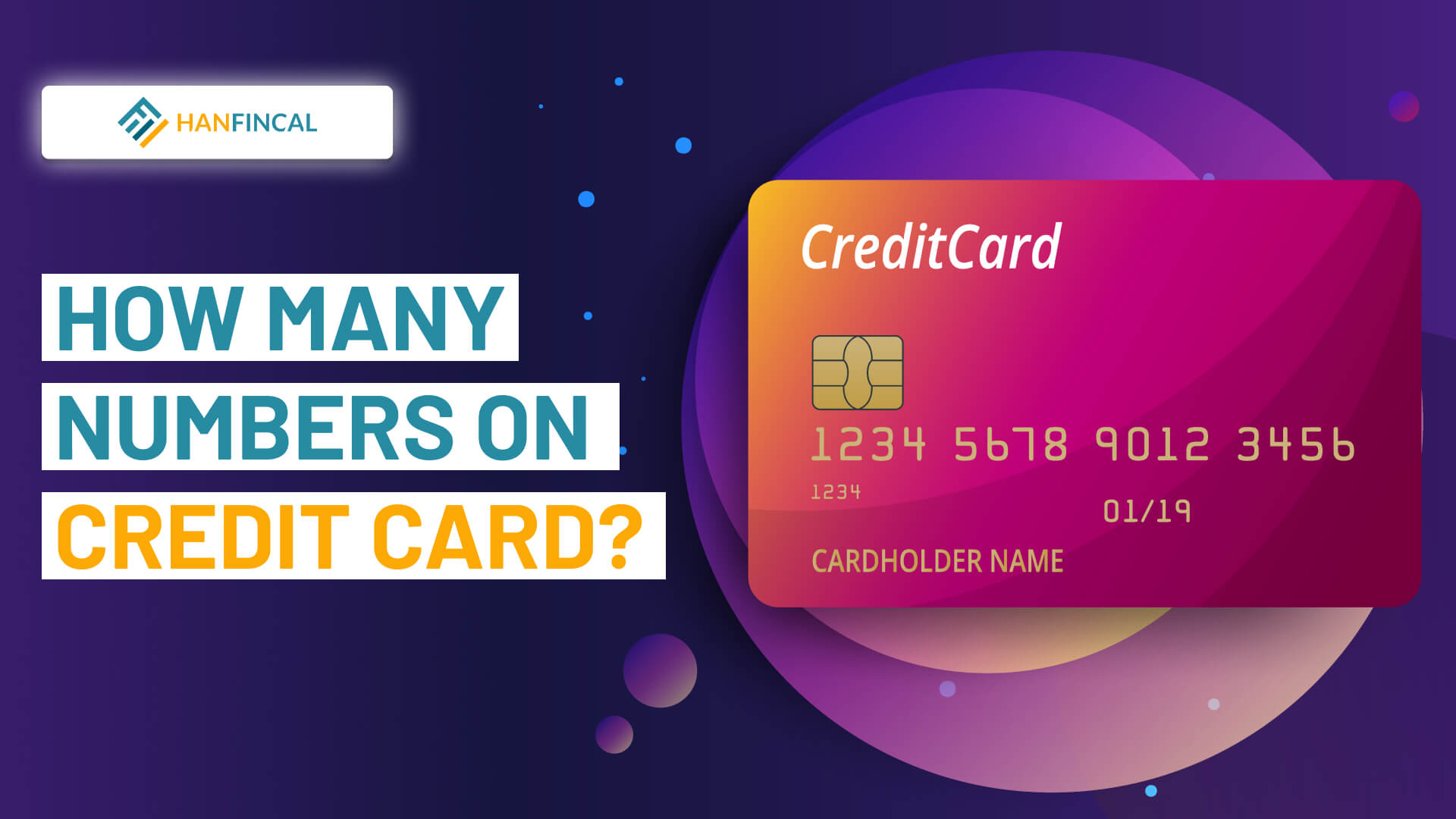Given Hanfincal, while nearly everyone has a banking card, only a few people know how many numbers are on a credit card. Is this true? Credit cards have undeniable advantages. They’re small enough to carry and simple to use. Understanding the numbers on these cards will help you protect them in the best way possible. Come here to find out what the answer is.
1. How many numbers are on a credit card?
There are 16 digits numbers on a credit card. Basically, card numbers represent the information about the card owner and the card issuer.
When you make a purchase, the 15 or 16-digit number on the front of your credit card is used to authenticate the transaction. This is due to the way credit card numbers are structured, which allows you to identify the payment network, cardholder, and other information.
Credit card numbers are not assigned at random; they are coded to identify the issuer, network, and account and validate the entire number to prevent theft and fraud.
2. What do the numbers on credit cards mean?
At first glance, debit and credit cards appear to be very similar, but they are not. While the numbers on your credit card may appear to be random, they have meaning.
- The first six digits identify the industry and/or credit card issuer. The first digit is the (MII) Major Industry Identifier.
- Airlines
- Airlines and Financial
- Travel and Entertainment (including American Express)
- Banking and Financial (Visa)
- Banking and Financial (MasterCard)
- Merchandising and Banking (Discover)
- Petroleum
- Health Care and Communications
- Government
- The following five numbers: The next five digits identify the card issuer, such as a bank or credit union, and the specific credit card product you are using. The numbers that identify the account holder are listed after identifying the issuer.
- The following 9-12 numbers: Except for the last digit, the seventh and all remaining digits in a card number identify the card’s account. Your account number can be as few as nine or twelve digits long.
- The final digit: A checksum is the last digit of a credit card number. It is a key that indicates whether or not a credit card is valid. A formula known as the Luhn Algorithm generates the “check number” or “key.”

What do the numbers on credit cards mean?
3. What about other numbers on a credit card?
How many numbers do a credit card have in addition to the ones listed above? The numbers do not appear in the 16-digit sequence above, but they are vital to your credit card. Let’s find out the Card Verification Value and the expiration date.
3.1. The Card Verification Value (CVV)
Card Verification Value is a series of three or four digits printed on the back of your debit or credit card. This number is never transmitted during card swipes and should be known only by you, the cardholder.
It adds another level of protection by representing another validation process. Its function remains the same regardless of its name.
A Point-Of-Sale (POS) system provides more assurance that the account owner has possession of the card — and that the number hasn’t been stolen — by asking for this small but significant additional piece of information.
3.2. The expiration date
Expiration dates are printed in a two-digit month/year format on the front or back of a credit card. Your credit card expires and is not valid at the end of the month specified on the card.
This date does not apply to the actual credit account but only to the piece of plastic. The cardholder’s account will remain active as long as the cardholder is in good standing.
The issuing bank assigns an expiration date to the card, which can help with security by requiring another verification step. A credit card number may have been stolen, but without the expiration date, it is nearly worthless.
4. Credit card numbers versus account numbers
How many digits are credit card numbers? Do you think these are the same as your account numbers? It’s not. Though the two are linked, the number on your credit card is not the account number.
Your account number will frequently appear on your credit card statement, and you will need to refer to it to make payments. If your card is lost or stolen, you will be issued a new card with new numbers, but your account number will remain the same.

Credit card numbers versus account numbers
5. How to protect your credit card numbers?
Now you understand what these numbers mean, you must best determine how to protect them. If these numbers are made public, thieves will steal them and use them for nefarious purposes, negatively impacting your financial health.
- Take care when photographing your credit card number. With today’s high-resolution still and video cameras, someone could enlarge a picture to read a credit card number, even if the card isn’t big in the image. If you must include your credit card in a photograph, cover up as many digits as possible. Because the first six digits of your card are not unique, make sure to conceal the remaining nine or ten numbers, if not all of them.
- Pay close attention to the platform when shopping online. If at all possible, use services that protect your credit card information, such as PayPal. Otherwise, investigate the company and ensure that the website is secure and employs an SSL certificate.
- Avoid writing down your card numbers, as this information could be used fraudulently like your actual credit card.
- If your card is stolen or lost, notify your card issuer immediately. Almost all credit card companies will send you a replacement card at no cost, and many will ship it to you for free via overnight mail if you request it.
- Be on the lookout for phishing emails. Do not click on any links if anything appears suspicious. Check the sender’s identity or contact your bank.
- Don’t forget to keep your computer safe from malware and spyware.
Make every effort to protect your numbers now as you understand how many numbers are on a credit card and what they mean. Your credit card contains vital information, and while the process is complicated, it helps simplify your life and the way you make payments.
==> Read More:




